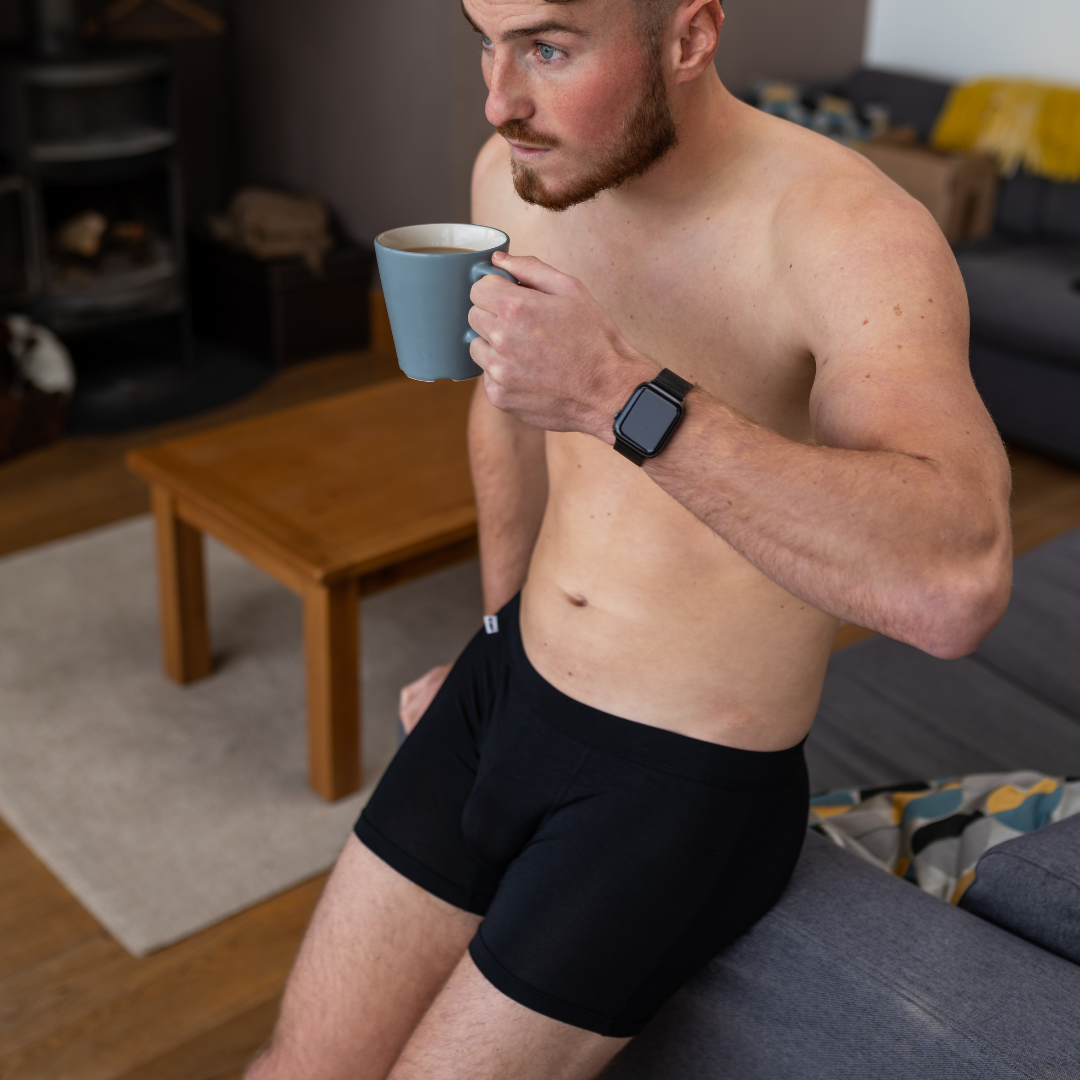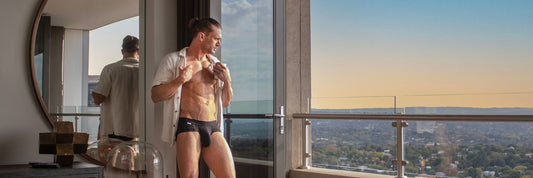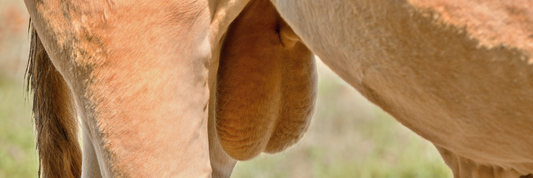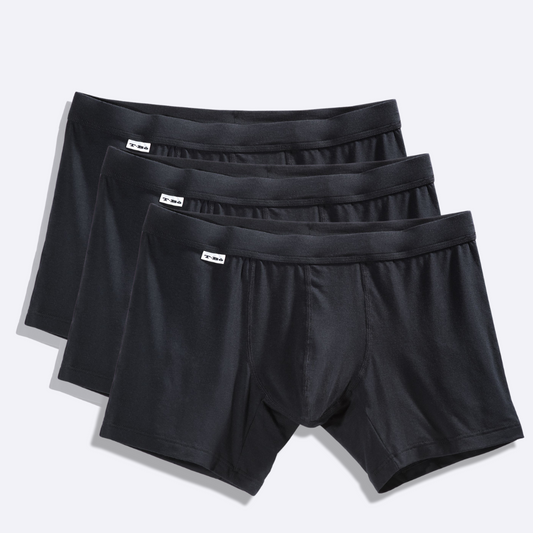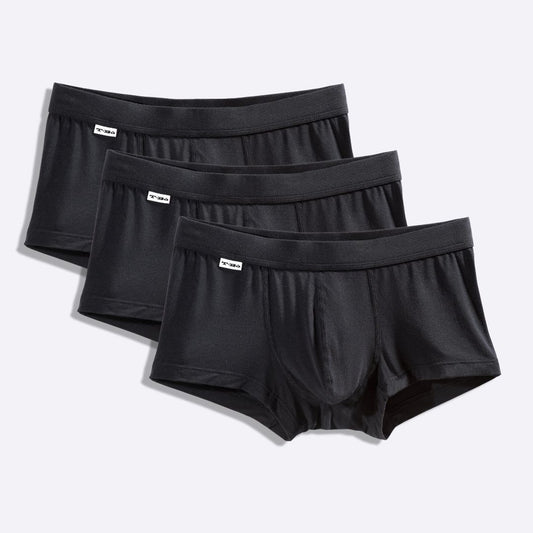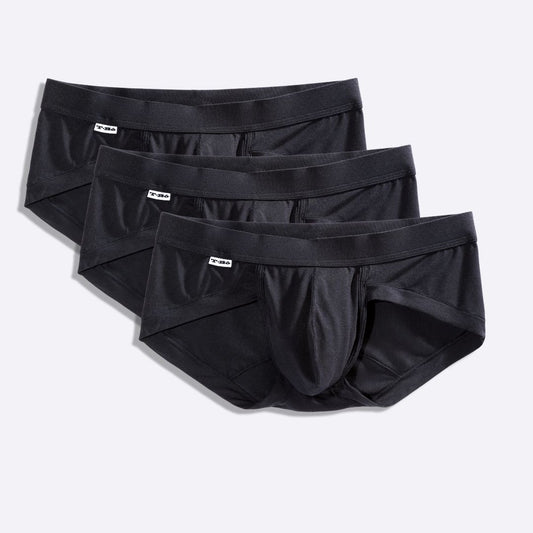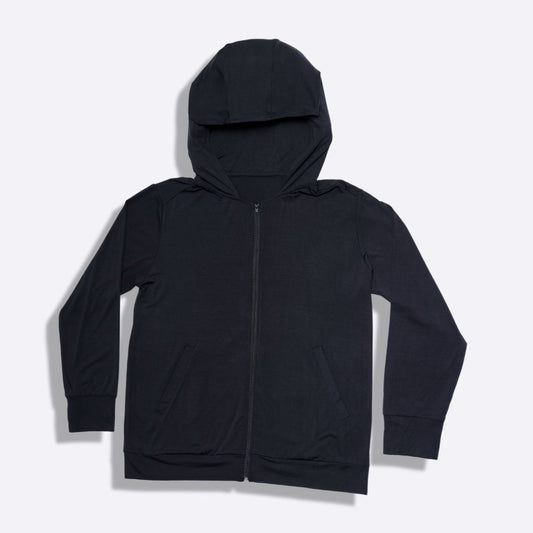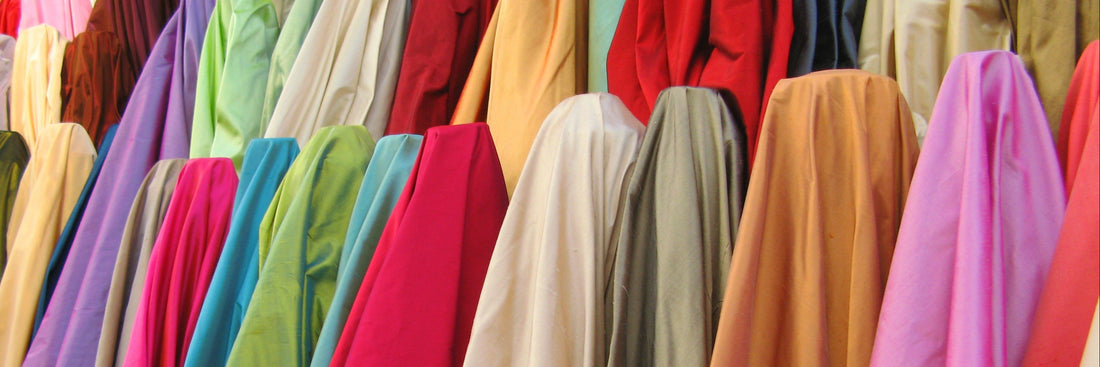
Rayon vs. Viscose vs. Bamboo: Understanding Textile Lingo
We recently had a commenter calling us out for using the term “Bamboo Fabric”. And in my attempt to construct a coherent reply to explain the benefit of simply using the term “bamboo fabric”, I thought that perhaps this is an opportunity to create a uniform article to help the general public understand textile lingo. And we'll also delve into a bit of the technical side looking at rayon vs. viscose fabric.
Let’s be honest, no one has the time, or motivation, to go sit down and do the research on the topic the way that it is supposed to be done. In this article, in less than a thousand words and with the help of some graphics, I hope to explain exactly what the difference is between rayon and viscose.
Is the term “Bamboo Fabric” inaccurate?
No. the term Bamboo Fabric is not inaccurate. It is like saying the term “cat” is inaccurate when referring to poor old Garfield because its technical species name is actually “Felis catus”. It does not make sense to be walking around calling everything by its technical name.
However, I will concede, maybe “Bamboo fabric” is a very vague, half-term. There is a lot more information behind that simple term that we can go into, and which I will go into in the next section of the article.

That being said, Bamboo Fabric is a layman’s term used when talking to the general public. This gives the information that a consumer needs to make a decision i.e. this is a material or fabric which was sourced or constructed by using the Bamboo plant.
If we want to be technically correct, we can say that the Fabric this Swiss Underwear brand (TBô) uses is “rayon (or viscose) made from bamboo.”
Rayon Fabric vs. Viscose Fabric
Rayon and viscose are frequently mistaken for the same fabric. However, there is a slight difference in the manufacturing process.
Rayon is made of regenerated cellulose (a substance found in plant cell walls). Plants are mechanically pulped, and then that pulp is chemically liquified. After that, the liquid is respun into a fabric that becomes rayon.
Viscose is made of wood pulp, Manufacturers soak the pulp or cotton in liquid viscose and then shred it. After the pulp and viscose are combined, it goes through the manufacturing process to become viscose fabric
The names Rayon or Viscose refer to the process of making the material but do not offer any insight into the source or plant that was used to create the fabric. Rayon and viscose can be manufactured from the wood of eucalyptus, spruce, and pine trees, but can also be made from cotton or bamboo.
In the case of TBô Underwear, the fabric is made from Bamboo. Hence, the name “Bamboo Fabric” or “Bamboo Underwear”.
We had an in-depth look at the steps of manufacturing this fabric here: Where is Bamboo Underwear from?
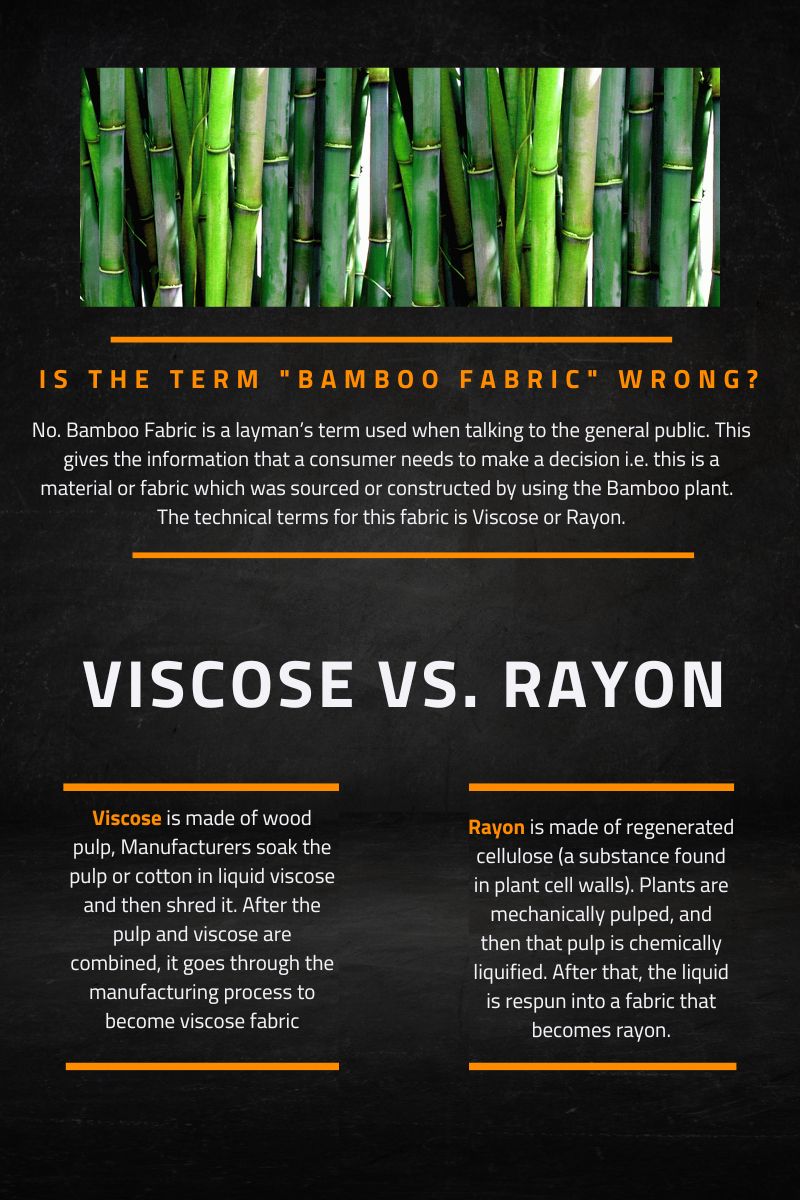
Different Types of Rayon and Viscose Fabrics
Now that we’ve established that Rayon and Viscose are referring to the way the fabric was produced, we can delve a bit deeper into the different types of Rayon currently available on the market.
Viscose
Viscose, a semi-synthetic form of rayon, is derived from wood pulp and serves as a substitute for silk due to its comparable drape and luxurious texture. This adaptable fabric finds applications in numerous areas, including clothing and cord production, and is widely recognized as the predominant form of rayon.
Modal
Modal fabric, a semi-synthetic textile derived from beech tree pulp, finds its primary applications in the realm of clothing, particularly for undergarments, sleepwear, and household items such as bed sheets and towels. The fibers used in the modal undergo more processing which makes the final product stronger, lighter, and more breathable. Originating in Japan during the 1950s, modal production today is largely dominated by Lenzing AG, an Austrian company holding the fabric's trademark. Notable brands produced by Lenzing AG include Lenzing Modal, China Modal, and Formatex.
Micro-Modal
Micro modal, crafted from tree pulp fibers, is a remarkably gentle fabric that has gained notable popularity due to its exceptional material qualities such as softness, longevity, and eco-friendliness. Distinguishing itself from regular modal, micro modal fibers possess a finer texture, yielding a fabric that is even softer, better fitting, and more breathable. Lenzing, the proprietor of trademarks like Lenzing Modal, Modal COLOR, and MicroModal AIR, also claims the trademark for MicroModal, further establishing its prominence in the industry.
Lyocell
Eucalyptus trees are the primary source of lyocell production, although bamboo, oak, and birch trees are also utilized. Being composed primarily of wood, lyocell fabrics possess inherent biodegradability. The manufacturing process of lyocell involves contemporary techniques that consume less energy compared to traditional viscose production, while the chemicals utilized exhibit low toxicity and are recycled in a closed-loop system.
Why wear Bamboo Fabric?
The benefit of having rayon fabric made from Bamboo is that it carries over many of the natural properties that the Bamboo plant has. That’s why so many men’s underwear manufacturers, like TBô, is going bamboo! Bamboo men’s underwear is taking the world by storm, let’s look at some of the benefits of the fabric made from Bamboo:
Sustainable and Eco-Friendly Properties
Viscose from bamboo is celebrated for its sustainable and eco-friendly properties. Bamboo is one of the fastest-growing plants on Earth, requiring no pesticides or fertilizers to thrive. It can grow up to one meter per day, making it an incredibly renewable resource. Furthermore, bamboo plants are known for their ability to absorb large amounts of carbon dioxide, helping to mitigate climate change. When harvested, bamboo does not need to be replanted, as new shoots naturally sprout from the existing plant. This means that bamboo forests can be sustainably managed without the need for deforestation. The production process of viscose from bamboo also has a low environmental impact, as it requires less water and energy compared to other fibers like cotton or polyester. By choosing products made from viscose from bamboo, consumers can actively contribute to a more sustainable future.
Soft and Comfortable Fabric
One of the key reasons why viscose from bamboo has gained popularity is its exceptional softness and comfort. The fibers of bamboo are naturally round and smooth, resulting in a fabric that feels luxurious against the skin. The softness of viscose from bamboo is comparable to silk or cashmere, offering a gentle touch that is perfect for sensitive skin. This makes it an excellent choice for clothing, bedding, and other textiles that come into direct contact with the body. Whether it's a cozy bamboo robe or a pair of bamboo sheets, you can expect a level of comfort that surpasses traditional materials. Additionally, the smooth texture of viscose from bamboo helps to reduce friction and irritation, making it an ideal option for those with skin conditions or allergies.
In addition to its softness, viscose from bamboo has the unique ability to regulate body temperature. The fabric naturally adapts to the surrounding environment, keeping you cool in hot weather and warm in cooler temperatures. This is due to its excellent breathability and moisture-wicking properties, which we will explore in more detail in the next section.
Breathability and Moisture-Wicking Capabilities
One of the standout features of viscose from bamboo is its exceptional breathability. The fabric allows air to circulate freely, keeping you feeling fresh and comfortable throughout the day. This is particularly beneficial in warm climates or during physical activities when sweat and moisture can accumulate on the skin. The breathability of viscose from bamboo helps to prevent the buildup of heat and moisture, reducing the risk of skin irritation and rashes. Whether you're wearing bamboo clothing or sleeping on bamboo sheets, you can enjoy a cool and dry experience that promotes optimal comfort and restful sleep
Furthermore, viscose from bamboo possesses impressive moisture-wicking capabilities. The fabric can absorb and evaporate moisture quickly, keeping you dry even during intense workouts or hot summer days. This moisture-wicking property helps to regulate body temperature and prevent the growth of odor-causing bacteria. As a result, products made from viscose from bamboo are popular among athletes and individuals with an active lifestyle. Whether it's a bamboo t-shirt or bamboo socks, you can rely on the fabric to keep you cool, dry, and odor-free

Hypoallergenic and Antibacterial Nature
For individuals with sensitive skin or allergies, viscose from bamboo is a dream come true. The fabric is naturally hypoallergenic, meaning it is less likely to cause allergic reactions or skin irritations. This is due to the absence of harsh chemicals or synthetic fibers that can often trigger sensitivities. Viscose from bamboo is free from harmful substances such as pesticides, formaldehyde, and heavy metals, making it a safe and gentle choice for those with sensitive skin conditions.
Additionally, bamboo possesses natural antibacterial and antimicrobial properties. The fabric contains a bio-agent called bamboo kun, which helps to inhibit the growth of bacteria and fungi. This makes products made from viscose from bamboo naturally resistant to odors, mold, and mildew. The antibacterial nature of bamboo also contributes to better hygiene and freshness, making it an excellent option for bedding, towels, and other home textiles. Whether you're seeking relief from allergies or simply want to maintain a clean and healthy environment, viscose from bamboo is a reliable choice.
There you have it, a condensed article explaining exactly what the difference is between Viscose vs. Rayon vs. Bamboo! Now you can also sound like a textile guru!
TBô’s Bamboo Underwear
At TBô we’ve committed to producing community-led designs that are comfortable. The clear answer was to make Bamboo underwear. Bamboo men’s underwear takes the experience of wearing undies from a mundane, everyday chore to an enjoyable experience that leaves you feeling fresh.
We explored the benefits of bamboo underwear in a previous post: Bamboo Underwear Benefits
